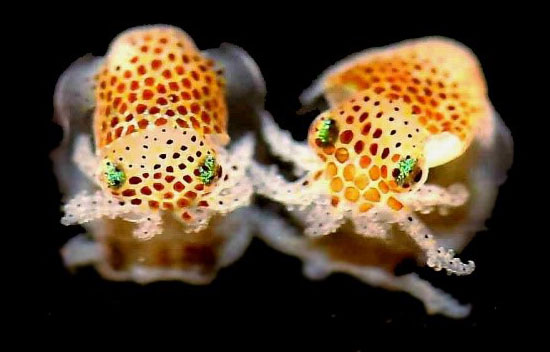 Michael Boyce, associate professor of biochemistry at Duke University in Durham, North Carolina. Credit: Michael Boyce.
Michael Boyce, associate professor of biochemistry at Duke University in Durham, North Carolina. Credit: Michael Boyce.
Sugars aren’t merely energy sources for our cells. They also play important signaling roles through a process called glycosylation, where they attach to proteins and lipids as tags. Although these sugar tags, called glycans, impact many cellular processes, they have long been understudied due to technical challenges. Now, advances in analytical tools like mass spectrometry are enabling scientists to examine the enormous complexity of glycans. Other advances also allow researchers to synthesize complex sugars, providing them with standards for analytical experiments.
Continue reading “PECASE Honoree Michael Boyce on Sugar’s Role in Cell Signaling and on Diversity, Equity, and Inclusion in the Scientific Workforce”

 Hawaiian bobtail squid. Credit: Dr. Satoshi Shibata.
Hawaiian bobtail squid. Credit: Dr. Satoshi Shibata.